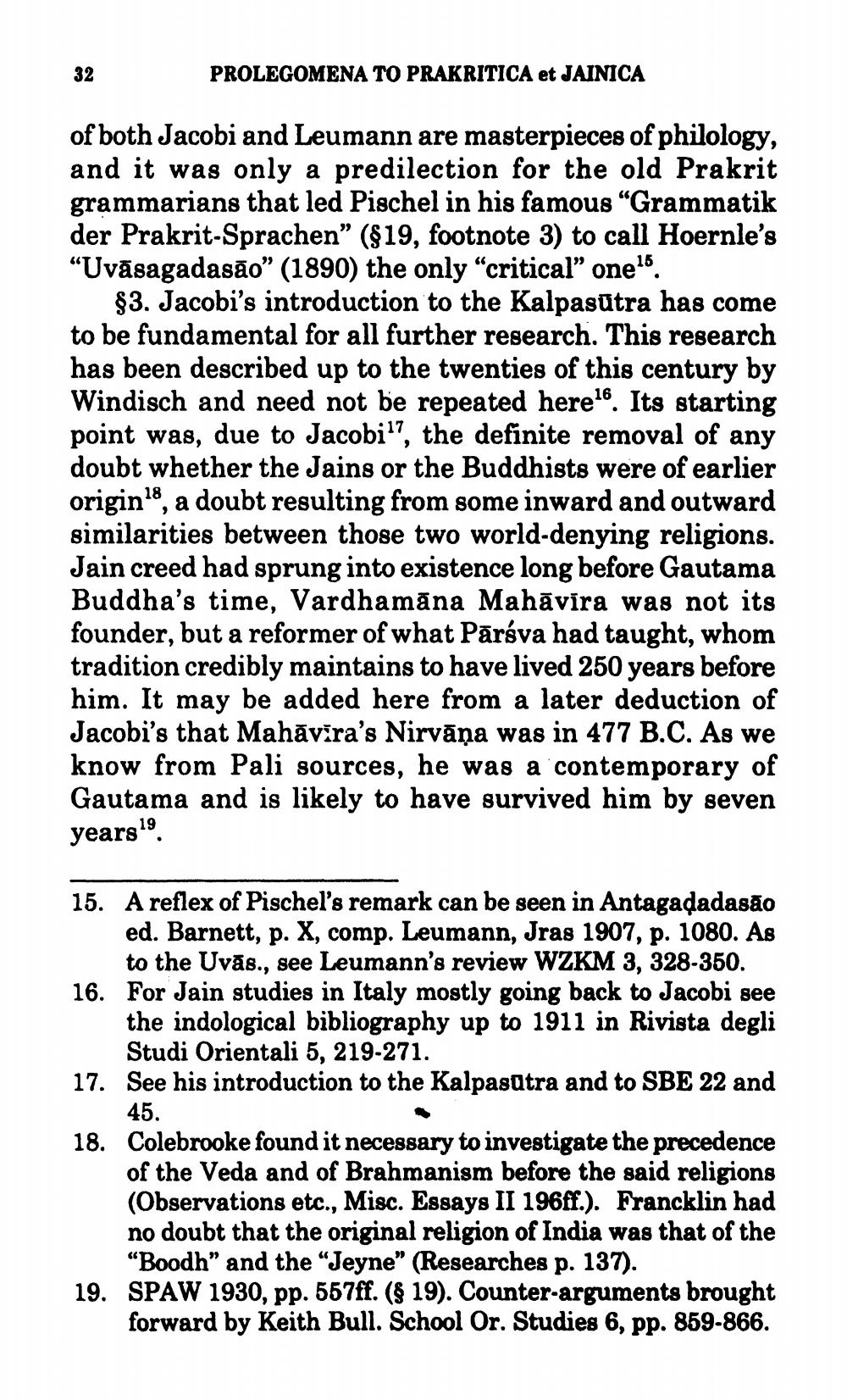________________
32
PROLEGOMENA TO PRAKRITICA et JAINICA
of both Jacobi and Leumann are masterpieces of philology, and it was only a predilection for the old Prakrit grammarians that led Pischel in his famous "Grammatik der Prakrit-Sprachen" ($19, footnote 3) to call Hoernle's “Uvāsagadasāo" (1890) the only "critical" one.
$3. Jacobi's introduction to the Kalpasūtra has come to be fundamental for all further research. This research has been described up to the twenties of this century by Windisch and need not be repeated here16. Its starting point was, due to Jacobi", the definite removal of any doubt whether the Jains or the Buddhists were of earlier origin", a doubt resulting from some inward and outward similarities between those two world-denying religions. Jain creed had sprung into existence long before Gautama Buddha's time, Vardhamāna Mahāvīra was not its founder, but a reformer of what Pārsva had taught, whom tradition credibly maintains to have lived 250 years before him. It may be added here from a later deduction of Jacobi's that Mahāvīra's Nirvāṇa was in 477 B.C. As we know from Pali sources, he was a contemporary of Gautama and is likely to have survived him by seven years'.
15. A reflex of Pischel's remark can be seen in Antagadadasão
ed. Barnett, p. X, comp. Leumann, Jras 1907, p. 1080. As
to the Uvās., see Leumann's review WZKM 3, 328-350. 16. For Jain studies in Italy mostly going back to Jacobi see
the indological bibliography up to 1911 in Rivista degli
Studi Orientali 5, 219-271. 17. See his introduction to the Kalpasatra and to SBE 22 and
45. 18. Colebrooke found it necessary to investigate the precedence
of the Veda and of Brahmanism before the said religions (Observations etc., Misc. Essays II 196ff.). Francklin had no doubt that the original religion of India was that of the "Boodh" and the “Jeyne" (Researches p. 137). SPAW 1930, pp. 557ff. (8 19). Counter-arguments brought forward by Keith Bull. School Or. Studies 6, pp. 859-866.




